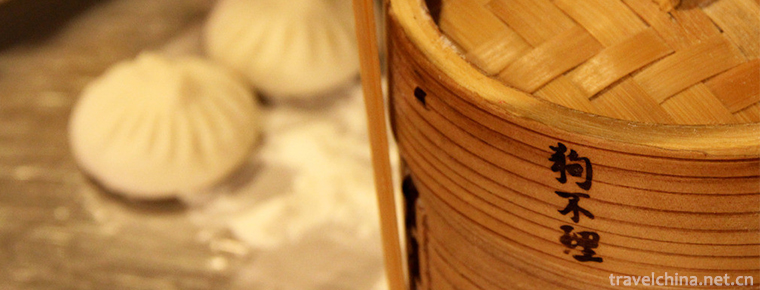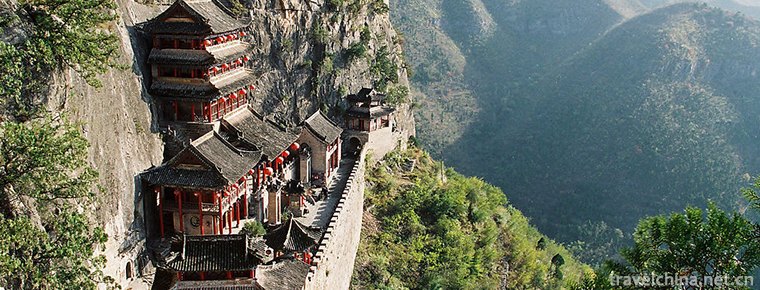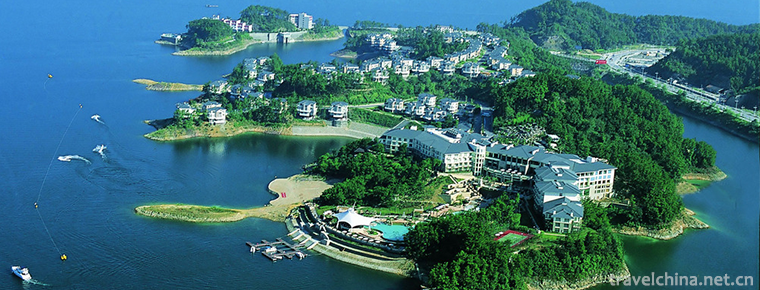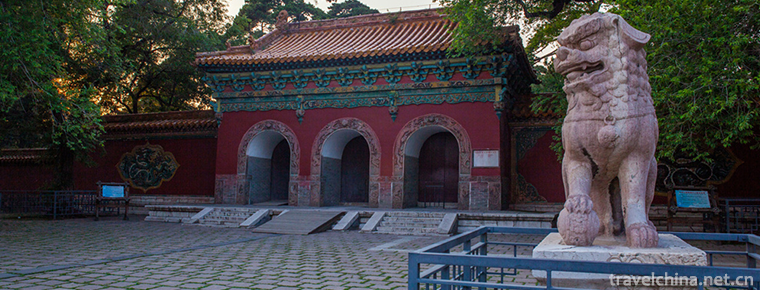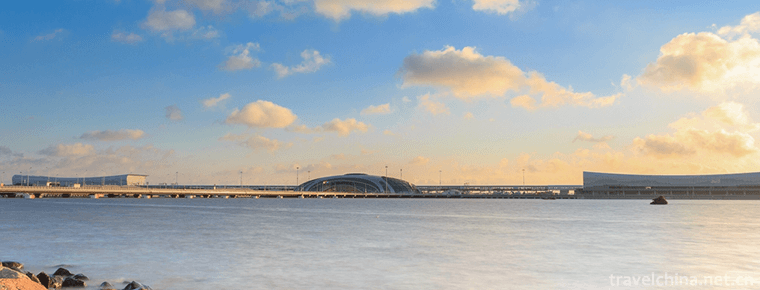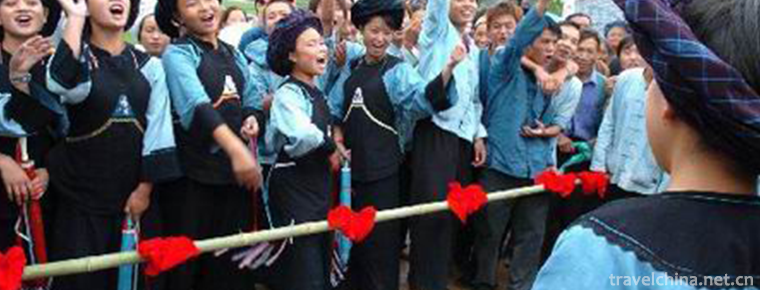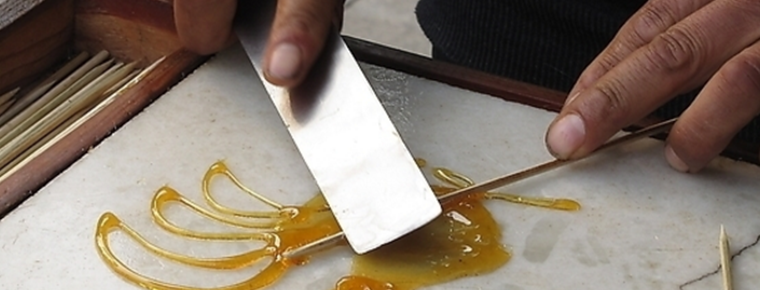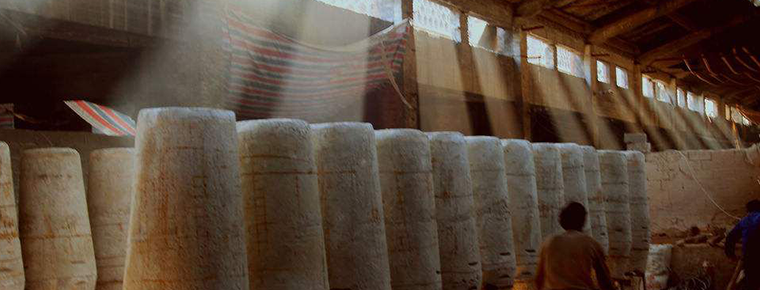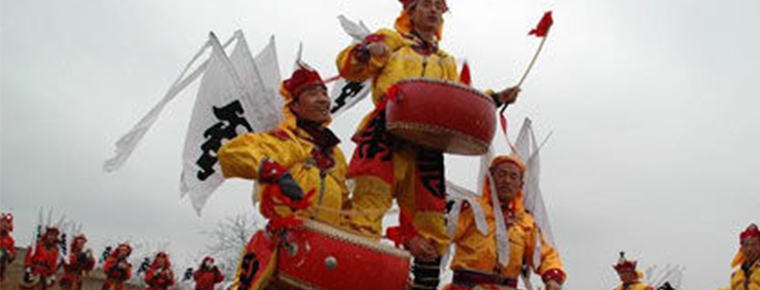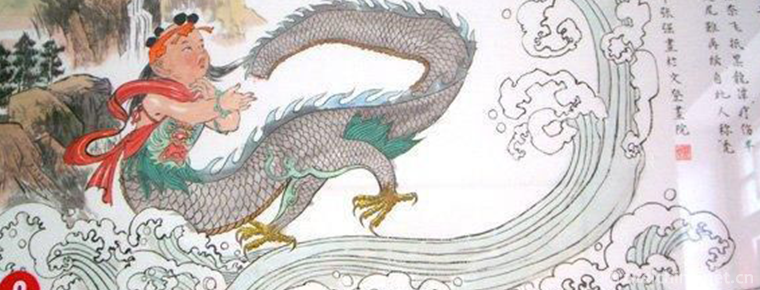Lingqiu Luoluo Tune
Lingqiu Luoluo Tune
Luoluo Opera in Lingqiu County, Shanxi Province and its surrounding local traditional drama, one of the national intangible cultural heritage.
Lingqiu Luoluo Opera evolved from Yiyang Opera and flourished during Qianlong Period of Qing Dynasty. From the end of Qing Dynasty to the Republic of China, it gradually declined. Luoluo tune is sung by one person in the front stage, and people help in the back stage. With the voice of "Luoluo yo", the name of "Luoluo tune" comes from it. There are special structures of the organic combination of Qupai aria and slab aria in its aria, such as a set of tunes composed of slabs, numerals and running water, and so on. In Luoluo Opera singing, the false voice "Wangqiang" is often used at the end of each sentence, and its way of accompanying committee is quite special.
On May 20, 2006, Lingqiu Luoqiang was approved by the State Council of the People's Republic of China to be listed in the first batch of national intangible cultural heritage, numbered IV-42.
historical origin
As early as early as the early Qing Dynasty, Luoluo Opera was popular throughout the North and South as a kind of "flower part" voice. According to the legend of the old artists, Luoluo Opera in Lingqiu was introduced from Hebei Province in the late Qing Dynasty, and its predecessor was the Silk String Opera in Hebei Province. Lingqiu Luoluo Opera and Silk String Opera belong to the same cavity system. Two kinds of performers perform together, commonly known as "one pot boiling", and Lingqiu area is also known as the local Luoluo tune "Yiluo tune" and "Yi silk string". "Yu" is a local appellation of Hebei, Shandong and other pronunciations. Accordingly, it can be considered that this kind of opera is silk string opera (Luoluo opera) which was gradually developed and formed after it flowed into the northern Shanxi Province, influenced by local appreciation habits, customs and human feelings, and language tones.
In the past, Lingqiu Luoluo Tune performed in worship of God. In some villages south of Datong, Lingqiu Luoluo Tune is performed on June 6 or July 15 of the lunar calendar. In Yingxian area, when married and wedded, it is often used as a propitious voice for its Wazi tune. The drummer class is invited to play it, and it is also called "Wazi tune" as "Xi Wazi".
In the early 1920s, this kind of drama tended to decline and disappeared on the stage before the founding of the People's Republic of China.
After the founding of the People's Republic of China, a professional Lingqiu Luoluo Opera Troupe was established in 1960. In 1961, the troupe participated in the performance of small operas in Shanxi Province and received great attention.
In 1964, the troupe performed Chiye River, a modern opera adapted from the opera of the same name, and participated in the modern opera festival in Shanxi Province.
Cultural characteristics
Libretto
Lingqiu Luoluo Opera is mostly written by the lower literati and folk oral creation. It is easy to understand and full of life flavor. The Lyric formats are mostly seven-character, eight-character and cross sentences. But the requirements are not very strict. Sometimes, six-character, nine-character and even more than cross sentences are also sung. Singing, clear pronunciation, strong rap, the combination of true and false sound. False sounds are often used at the end of sentences, often appearing in a high octave "back Palace sound" to form a unique singing style. There is no strict distinction between actors and actresses in their tone. Only the tune of "Numerals" differs from that of "Waziqiang" in that both men and women are in the same tune.
action
Lingqiu Luoluo Opera pays attention to "Four Gongs and Five Ways" in its performance, and its performance procedures such as "hegemony", "marching", "crossing horses", "climbing palaces" and "sitting in accounts" are also standardized. In addition, the footwork of "Huabangzi" was absorbed from Bangzi of Shanxi North Road.
Music for voices in a Chinese Opera
There are many tunes in Lingqiu Luoluo tune. It is said that there are 72 tunes in Lingqiu Luoluo tune, but most of them have been lost. Early traditional music cards such as "Wazi", "Caiqiang" and "Mountain Goat" are retained in the aria. In the long-term development process, its singing structure is constantly changing. There are more than ten kinds of traditional music singing tunes in Luoluo Opera, such as swing board, numerals, flowing water, flat plate, stacking board, loose board, baby, crying cavity and lifting chamber. Among them, the numerals with strong rap ability are representative singing tunes. There is a special structure of the organic combination of Qupai aria and slab aria in its aria, such as a set of tunes composed of swing board, numerals and running water, etc. In Luoluo tune singing, fake voice "playing tune" is often used at the end of each sentence. Its accompaniment is more special, "singing without accompanying", and the instrument enters through the door at the end of each sentence. Music belongs to the combination of polytonal tunes and cards. Its characteristics are lively, fluent and suitable for Lyric narration. Its singing can be divided into two categories, one is "numerals" in palace mode, the other is "dolls" in fine-tuning mode, and the other is "running water" (belongs to the "dolls" system). "Number" is segregated between men and women, and the rest are homologous. In singing, it has the characteristics of clear lines, strong rap and combination of true and false sounds.
Musical Instruments
The Orchestra accompaniment is also divided into Wenchang and Wuchang. There are drum boards, clapper boards, cymbals, small plated gongs and tanggongs in the martial arts arena; there are banhu, qudi, sanxian, sea flute and Sheng in the literary arena. After the founding of the People's Republic, Erhu, Dati and Zhongruan were added. Accompaniment instruments can be divided into Wenchang and Wuchang. There are drums, cymbals, cymbals, small cymbals, gongs and hall gongs in the martial arts. The gongs and drums used in coordination with the movements are basically the same as those used in Bangzi, Shanxi North Road. The gongs and drums connected with the singing part are unique to themselves. The instruments in Wenchang include Xiaobanhu, Qupi, Sanxian, Haipi, Sheng, etc. After the founding of the People's Republic of China, Erhu, Zhongruan, Cello and dulcimer were added, but Banhu and flute still dominated. When Banhu accompanied the "Wazi Tune" system, his fingering method was special. He did not draw the "1" sound from the outer string, but took the sound from the inner string with the fifth finger of his left hand. Otherwise, the inherent characteristics of "Wazi Tune" will not be played.
role
The roles of Lingqiu Luoluo Opera should be born, dan, jing, Fu and ugly. With Xiaosheng Xiaodan and the clown as the main "three small doors", the performance is exquisite and real, lively and free from wine, and quite interesting. The performances of other professions are mostly similar to those of Beilu Bangzi.
Representative repertoire
There are many traditional plays in Luoluo Opera, such as Yang Jia Jiang, Luo Tong Sao Bei, Muddy River, Handan Hui and Lianglangshan. Public-case plays include Longbao Temple, Hairui Search Palace, Piao Kou and Black Donkey Bill. Family life plays include Little Two Sisters Dreaming, Beating Birds and Jinsatin Story.《 Bottomless Hole, Selling Flowers and so on, totaling more than 40.
Inheritance and protection
Inheritance value
Lingqiu Luoluo Opera provides vivid materials for understanding the traditional opera and the law of its development and change.
Lingqiu Luoluo Opera has its own characteristics, such as role system, music system and stage system. Especially music system, the combination of traditional singing cards and incomplete board-style singing is the primary form of the transition of Chinese opera from board-style to board-style singing, which is of great academic value to the development history of Chinese opera.
Inheritance status
Due to the lack of funds, shrinking performance market and the loss of actors, the ancient Luoluo Opera Troupe in Lingqiu County, founded in 1960, is the only professional performing group.
Inheriting characters
Fan Zeng, male, from Lingqiu County, Datong City, Shanxi Province, is the representative successor of the third batch of national intangible cultural heritage projects. Lingqiu County, Datong City, Shanxi Province, declares. Declaration item: Lingqiu Luoluo cavity.
protective measures
- Artist training
In order to inherit and develop Luoluo Tune, Fan Zeng entrusted Datong Art School to set up a Lingqiu Luoluo Tune Class in 2006, which recruited 30 students and pioneered the training of academic classes. Bai Yuwen and Guo Debao were trained as the backbone of the troupe.
Government support
Local governments and relevant departments are also actively involved in protecting new initiatives, such as rebuilding and building 200 square meters rehearsal hall, setting up and updating stage equipment; interviewing old Luoluo opera artists and recording and video recordings; digging and sorting out excellent traditional operas and singing tunes; Lingqiu county government allocated 100,000 yuan to solve the urgent needs of the troupe's performance clothing and stage equipment.
social influence
Honorary commendation
In December 2004, Luoluo Opera Troupe's traditional play "Little Second Sister Dreaming" won the 13th National "Stars Award" bronze medal in Shanxi Selection Competition.
On January 3, 2008, Luoluo Opera Troupe participated for the first time in the evaluation and performance of the 11th Shanxi Drama Award for Apricot Blossom, and won three awards for its excellent play "Drawing the Golden Cabinet".
Important performance
In 1961, Luoluo Opera Troupe participated in the performance of small operas in Shanxi Province.
From Nov. 23 to Dec. 12, 2018, the five excellent silk string performances were held at Shijiazhuang Silk String Theatre. The Lingqiu Luoluo Opera Troupe performed the classic traditional play Qingfeng Pavilion.
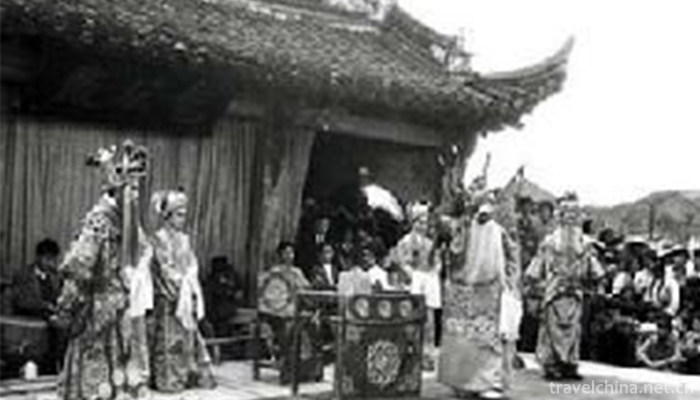
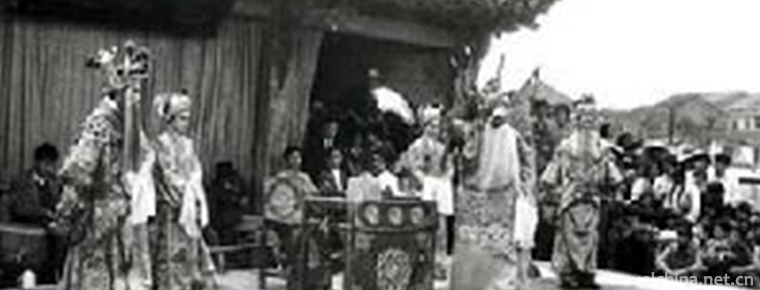
Lingqiu Luoluo Tune
-
Go BelieveGoubuli baozi
Goubuli steamed bun is a snack made of flour, pork and other materials. It was founded in 1858 (Xianfeng period of the Qing Dynasty).
Views: 226 Time 2018-11-14 -
Wa Palace Scenic Area Handan City
Wa Palace, located in Zhonghuangshan Mountain, Shexian County, Handan City, Hebei Province, covers an area of 5 square kilometers.
Views: 280 Time 2018-11-24 -
Thousand Islet Lake Qiandaohu Scenic Area
Qiandaohu Scenic Area, also known as Xin'anjiang Reservoir, is located in Chun'an County, Hangzhou City, Zhejiang Province.
Views: 210 Time 2018-12-07 -
Three Mausoleum of Shengjing
The three mausoleums outside Guanzhou refer to the Fuling Tombs of Nuerhachi, the Taizong Emperor of the Qing Dynasty, and the Zhaoling Tombs of the Taizong
Views: 149 Time 2019-02-08 -
Wu Songgun Taiwan Wetland Forest Park
Wu Song Gu Taiwan Wetland Forest Park: Wu Song Gu Taiwan Wetland Forest Park with a total area of 53.46 hectares is located in the eastern part of Baoshan District
Views: 214 Time 2019-02-22 -
Bouyei costume Guizhou Province
As a material and cultural phenomenon, the production and change of Buyi costumes are always in line with the social and economic development.
Views: 187 Time 2019-04-04 -
Traditional skills
Chinese traditional folk art is a craft inherited from Chinese folk, such as paper-cut is one of the most popular traditional folk decorative arts in China, with a long history
Views: 343 Time 2019-04-19 -
Construction Techniques of Jingdezhen Traditional Porcelain Kiln Workshop
Jingdezhen traditional porcelain kiln workshop building skills, Jiangxi Province Jingdezhen local traditional ceramic industry building and building skills, one of the national intangible cultural her
Views: 112 Time 2019-05-08 -
Old soup essence formula
The formulation of Royal Food Old Tangjing includes the formulation and production technology of Old Tangjing, which is a valuable cultural treasure in the history of condiment development in China. T
Views: 150 Time 2019-05-11 -
Luochuans drums
Luochuan Yigu, a traditional dance in Luochuan County, Shaanxi Province, is one of the national intangible cultural heritage.
Views: 163 Time 2019-05-15 -
Legend of bald tailed Lao Li
Folk legends of bald-tailed Lao Li are widely circulated in Shandong Province, and similar written records are found in Yuan Mei's Zi Yu of the Qing Dynasty: "Bi Shifu, Wendeng County, Shandong P
Views: 150 Time 2019-06-23 -
Nanchong economy
In 2019, Nanchong's GDP will reach 232.222 billion yuan, an increase of 8.0% over that of 2018. Among them, the added value of the primary industry was 40.425 billion yuan, an increase of 2.9% over 2018; the added value of the secondary industry was
Views: 357 Time 2020-12-17
